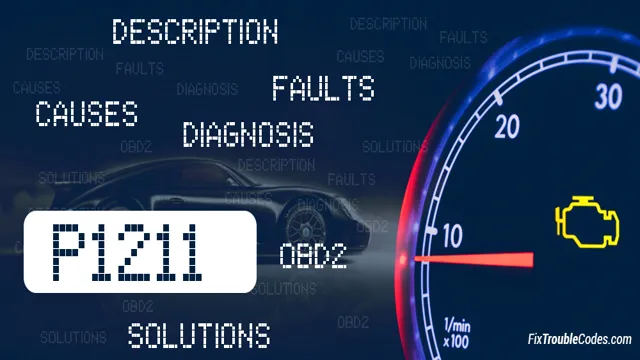Say Goodbye to Daytime Running Lights: Simple Ways to Disable Them Today
Do you find daylight running lights to be a nuisance? Perhaps you do not want them on during certain weather conditions or simply prefer to turn them off altogether. In this guide, we will show you how to disable your vehicle’s daylight running lights so you can drive without distraction. Whether you drive a car, truck, or SUV, this easy step-by-step tutorial will help you achieve the desired result and give you peace of mind while driving.
Say goodbye to the blaring lights and hello to a more customizable driving experience. So, buckle up and let’s get started!
Why Disable Daylight Running Lights?
Do you want to disable your daytime running lights (DRLs) but don’t know how? There are a few reasons why someone might want to disable their DRLs. The most common reason is that they find them too bright or annoying. Some drivers prefer to use their headlights only when necessary, to conserve battery life and prolong their lifespan.
Another reason is the control it allows for styling purposes. DRLs can disrupt the look of an aftermarket headlight or can be conflicting with other visual components of the car. Whatever the reason, disabling your DRLs can be done in a few simple steps.
Check your car’s manual for specific instructions, but most models require disconnecting a specific wire or unplugging a fuse in the fuse box. With a bit of knowledge and technical expertise, you can personalize the look and functionality of your car to fit your preferences.
Safety Concerns
Daylight running lights (DRLs) are often disabled for safety concerns. One reason is that they may cause problems during dawn, dusk or nighttime when they don’t provide enough illumination due to ambient lighting. This can result in drivers not noticing other vehicles on the road, leading to accidents.
Another reason is that DRLs may interfere with other safety features, such as automatic headlights, which can be confused by the constant low-level lighting from DRLs. Additionally, DRLs may make it difficult for drivers to signal their intention to turn or brake, as the constant illumination may reduce the visibility of these signals. As such, disabling DRLs can help prevent accidents and improve overall visibility on the road.
However, it’s important to note that certain car models may have specific laws or regulations around DRL usage, so it’s best to check with your local authorities before disabling them.

Aesthetic Preferences
If you’re someone who pays attention to the details of your car’s aesthetics, you may be wondering why anyone would want to disable daylight running lights (DRLs). After all, these lights are on for safety reasons, right? While it’s true that DRLs can increase visibility on the road, some drivers may prefer to turn them off in order to achieve a certain look for their car. Perhaps they find the lights too bright or distracting, or maybe they simply prefer the appearance of the car without them.
Whatever the reason, disabling DRLs is a personal preference that’s completely up to the individual driver. However, it’s important to note that if you do choose to turn off your DRLs, you should always make sure your headlights are on when driving in low-light conditions to maintain proper visibility.
Methods for Disabling Daylight Running Lights
Are you tired of your car’s daylight running lights (DRLs) being constantly on? It can be a nuisance when you want to drive with only your headlights on, or when you want to save battery life. Fortunately, there are methods for disabling DRLs. One way is to remove the DRL fuse, which can be found under the hood of your car.
Another method is to use a DRL module, which can be installed to allow you to turn off the lights manually. Some cars also have a switch or button that allows you to disable DRLs. If your car doesn’t have this feature, you can install a toggle switch or relay to turn them off.
However, it’s important to note that disabling DRLs may not be legal in some countries or regions, so be sure to check your local laws and regulations before doing so.
Removing the Fuse
Daylight running lights (DRLs) are meant to keep you safer on the road by increasing visibility during the day. However, some drivers may want to disable them for various reasons. One way to do this is by removing the fuse that controls the DRLs.
Firstly, consult your vehicle’s manual to find the fuse box. Next, identify the appropriate fuse by looking for “DRL” or “Daytime Running Lights”. Use a fuse puller or pliers to remove the fuse.
Some vehicles have multiple fuses for the DRLs, so make sure to remove the correct one. Keep in mind that by disabling DRLs, you may be decreasing your visibility on the road and compromising your safety. It’s important to weigh the pros and cons before making such a decision.
Unplugging the Module
Disabling Daylight Running Lights is a relatively simple process that can be done in a variety of ways. One method is to unplug the module responsible for controlling the lights. This can be found under the hood, usually near the battery.
Simply disconnect the module and the lights should be disabled. However, this method may not be legal in all areas and could result in failing a vehicle inspection. Another option is to use a specialized device to program the car’s computer to disable the lights.
This requires a bit more technical knowledge and specialized equipment, but can be a more permanent and legal solution. It’s important to note that disabling Daylight Running Lights can decrease visibility and safety on the road, so it’s recommended to use caution and only disable them if absolutely necessary.
Using a Bypass
If you’re looking to disable your daytime running lights, you may be wondering what your options are. One popular method for disabling DRLs is using a bypass. A bypass essentially works by tricking your car’s system into thinking that the lights are turned off, even though they are still technically on.
There are a variety of different types of bypasses available on the market, but it’s important to note that some may not be legal in your area. Additionally, installing a bypass can potentially void your car’s warranty, so it’s important to weigh the pros and cons before proceeding. That being said, if you’re looking for a relatively simple and affordable way to disable your DRLs, a bypass may be worth considering.
Legal Implications of Disabling Daylight Running Lights
If you’re looking to disable your vehicle’s daylight running lights, it’s important to understand the legal implications of doing so. While it may seem like a simple modification, it can actually result in significant fines and even voiding your vehicle’s warranty. In many states, it’s illegal to drive without functioning daylight running lights as they promote increased visibility and safety on the road.
Additionally, disabling your vehicle’s lights could also increase your chances of being involved in an accident, particularly during times of low visibility or inclement weather. Before making any modifications to your vehicle, it’s important to consult your owner’s manual and local laws to ensure you’re not risking your safety or breaking any laws.
State Laws
Disabling Daylight Running Lights Many state laws in the USA require drivers to use their headlights while driving, even during daylight hours. However, some drivers may prefer to disable their Daylight Running Lights (DRLs) to save energy or simply because they find the lights irritating. While there is no federal law that requires the use of DRLs, some states like California and Canada have made it compulsory since 1990.
Disabling DRLs is considered illegal in those states and may result in fines or legal repercussions. Even in states that do not require the use of DRLs, it is still recommended for safety purposes. DRLs help improve visibility during inclement weather and reduce the chances of collisions.
Thus, disabling them can potentially put the driver and other road users at risk. In conclusion, while it may be tempting to disable DRLs, it is important to adhere to your state’s laws and prioritize safety on the road.
Insurance Considerations
When it comes to disabling daylight running lights, it’s important to understand that it may have legal implications and affect your car insurance policy. Daylight running lights are required by law in many states, and disabling them can result in a ticket or even a fine. Additionally, depending on your insurance policy, disabling these lights may be considered a modification to your vehicle, which can lead to increased premiums or even a denial of coverage in the event of an accident.
It’s crucial to consult with your insurance provider and read your policy carefully before disabling any safety features on your vehicle. Safety should always be the top priority on the road, and disabling important features to save some money on insurance or to achieve a certain look may not be worth the potential consequences.
Conclusion: Weighing the Pros and Cons of Disabling Daylight Running Lights
In conclusion, disabling your vehicle’s daylight running lights is a quick and easy process that can give you back control over your vehicle’s aesthetic and battery life. It’s as simple as checking your owner’s manual for the location of the DRL fuse or using an aftermarket switch. With this newfound knowledge, you’ll be able to shut down those headlights and take back the nighttime horizon, leaving behind the glaring visage of DRLs that scream “I’m too safe for my own good.
” Remember, just because they’re “daylight” running lights doesn’t mean they need to run all day and night. So, go forth and liberate yourself from the tyranny of DRLs, and revel in the newfound freedom of your personal driving style.
FAQs
What are daylight running lights and why are they important?
Daylight running lights are headlights that automatically come on when a vehicle is started and are designed to improve visibility during the daytime. They are important because they increase the likelihood of a vehicle being seen by other motorists and therefore reduce the risk of accidents.
Can daylight running lights be turned off?
In most cases, daylight running lights cannot be turned off as they are a standard safety feature on vehicles. However, some vehicles may have an option to disable them through the settings in the dashboard or with the help of a mechanic.
Is it legal to disable daylight running lights?
It may not be legal to disable daylight running lights in some jurisdictions as they are required by law in many countries. However, some jurisdictions may allow drivers to disable them if they have a legitimate reason, such as driving in a parade or participating in a car show.
What are the consequences of disabling daylight running lights?
Disabling daylight running lights can result in reduced visibility, which can increase the risk of accidents, especially during low light conditions. Additionally, disabling them may also result in a fine or citation, depending on the laws in your jurisdiction.






